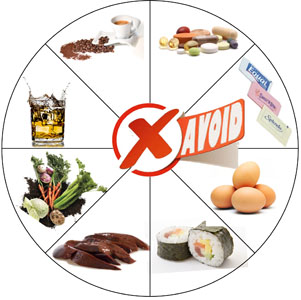
Diabetes patients can choose from a variety of foods. It is important to eat a balanced diet in order to control blood sugar. Legumes contain high amounts of protein, fiber, high-quality carbohydrates, and both high-quality and low-calorie carbohydrate. Soluble fiber helps stabilize blood sugar levels and curbs hunger. In a recent study, eating legumes reduced type 2 diabetes risk, and improved blood sugar control.
As a low-carb food, avocados are a great choice for diabetics. Avocados are high in healthy fiber and healthy healthy fats. Walnuts have a high level of omega-3s making them a good choice for diabetics. It is important that you only consume one serving of walnuts. Chickpeas is another legume that is high in protein and fiber. Because they are high in dietary fibre, they are a great source of protein as well as being a healthy snack.
While most people don't like the taste of spinach, pumpkin contains beta-carotene, which converts to essential vitamin A. Pumpkins are rich in beta-carotene and should be served as a main starch. You can eat the skin if you are unable to eat them. They can be cooked in a recipe and then served as part a meal. For an extra protein boost, you can mix a scoop of quinoa with your favorite soup or smoothie.

Greek yogurt can also be enjoyed by diabetics as a snack. A portion of this starchy vegetable is only six to eight grams, so it is a safe choice for a snack or breakfast. Some brands may contain added sugar so make sure you read the label. In addition to the yogurt, you can eat fruit in moderation, including berries and cherries. Flax seeds have lignans that help to improve insulin sensitivity, and decrease the risk of heart disease.
Sweet potatoes are rich in potassium, fiber and lean proteins. They can be cooked or eaten as a snack. Sweet potatoes, although high in carbs and sugar, are ideal side dishes for vegetables and lean proteins. They are also a good source of magnesium, which lowers the risk of diabetes and can prevent stroke. These foods are great for diabetics.
A variety of fruits and vegetables are high in antioxidants and are a good source of fiber. They can also be used in salads or smoothies. In addition to berries, you can also use Greek yogurt for salads and yogurts. They can be used in place of yogurt. You can use them to make smoothies. When preparing fruit for salads, you can use them to enhance the taste of your desserts.
Diabetic diets have to be balanced. Ideally, the best foods for diabetics should be low in sugar, but not in saturated fats, or trans fats. They should be rich sources of fiber, protein, as well as fiber. A diabetic diet should be based on fruits and vegetables as well as whole grains. Healthy fats should be included in the diet. You can get the benefits of these foods from these sources.

Healthy eating habits for diabetics include plenty of fruits, vegetables, and whole grains. Fruits and vegetables that are fresh, ripe, and organic are the best. Low-calorie foods should be considered the best food for diabetics. There are many ways you can include fruits and vegetables in your daily diet. For instance, you could eat nuts every morning. These delicious foods can be healthy for diabetics. Just remember to watch your sugar intake to prevent diabetes.
Greek yogurt is another food that diabetics can eat. It is high-fiber and very low in carbohydrates. It can be eaten as a snack or as part of a savory recipe. A wide range of whole grains are also included in this recipe. They are low in calories and high in fiber. For example, whole-grain breads are the best foods for diabetics because they are low-sugar. These breads and pastas are also a good source of fiber.
FAQ
How does an antibiotic work?
Antibiotics are medications that kill harmful bacteria. Antibiotics are used for treating bacterial infections. There are many kinds of antibiotics. Some can be taken orally while others are injected. Others are topically applied.
Antibiotics are often prescribed to people who have been exposed to certain germs. If someone has chicken pox, they might need to take an oral antibiotic in order to prevent shingles. An injection of penicillin may be necessary to prevent pneumonia if someone has strep.
Doctors should prescribe antibiotics to children. Side effects of antibiotics can be more dangerous for children than for adults.
The most common side effect of antibiotics is diarrhea. Other side effects possible include dizziness, nausea, vomiting, stomach cramps, dizziness and allergic reactions. These side effects usually disappear once treatment has ended.
Why is it so important to lead a healthy lifestyle
Living a healthy lifestyle can help you live longer and more happy lives. Good nutrition, exercise regularly, good sleep habits, stress management and healthy lifestyle can help you avoid heart disease and stroke.
Healthy lifestyles will help us to cope with daily stresses better and improve our mental health. A healthy lifestyle will help us feel more confident and younger.
How can you live your best life every day?
Finding out what makes your heart happy is the first step to living a fulfilled life. Once you've identified what makes your happy, you can start to work backwards. You can also ask other people what they do to live the best lives possible every day.
Dr. Wayne Dyer's book "How to Live Your Best Life" is also available. He speaks about happiness and fulfillment in all areas of life.
Here are 7 ways to live a healthy lifestyle.
-
Be healthy
-
Exercise regularly
-
Sleep well
-
Make sure to drink plenty of water.
-
Get enough sleep
-
Be happy
-
Smile often.
How often do I need to exercise?
A healthy lifestyle requires regular exercise. You don't have to exercise for a certain amount of time. Find something you like and stay with it.
Three times a week, you should be aiming to complete 20-30 mins of moderate intensity activity. Moderate intensity means that your muscles will continue to work hard even after you finish. This type works out burns around 300 calories.
For those who prefer to walk, you can go for 10-minute walks four times a week. Walking is low-impact, easy on your joints, and it's also very gentle.
If you'd rather run, try jogging for 15 minutes three times a week. Running can help you burn calories and to tone your muscles.
Start slowly if you aren't used to doing exercise. You can start with only 5 minutes per week of cardio. Gradually increase the time you do cardio until your goal is reached.
How do I know what's good for me?
Listen to your body. Your body is the best judge of how much exercise, food and rest you should get. Your body will tell you what to do so that you don't go overboard. You must listen to your body to ensure you are healthy.
Statistics
- Extra virgin olive oil may benefit heart health, as people who consume it have a lower risk for dying from heart attacks and strokes according to some evidence (57Trusted Source (healthline.com)
- This article received 11 testimonials and 86% of readers who voted found it helpful, earning it our reader-approved status. (wikihow.com)
- In both adults and children, the intake of free sugars should be reduced to less than 10% of total energy intake. (who.int)
- The Dietary Guidelines for Americans recommend keeping added sugar intake below 10% of your daily calorie intake, while the World Health Organization recommends slashing added sugars to 5% or less of your daily calories for optimal health (59Trusted (healthline.com)
External Links
How To
What does the meaning of "vitamin?"
Vitamins are organic compounds naturally found in food. Vitamins aid us in absorbing nutrients from the food we eat. The body cannot make vitamins; therefore, they must be obtained from food.
There are two types of vitamins: water soluble and fat soluble. Water soluble vitamins dissolve easily in water. You can find vitamin C,B1 or thiamine, B2 or riboflavin and B3 or niacin, B3/niacin, B6/pyridoxine, folic Acid, biotin and pantothenic Acid as examples. Fat-soluble vitamins can be stored in the liver or in fatty tissue. These include vitamin D, E and K, as well as beta carotene.
Vitamins are classified according to their biological activity. There are eight main groups of vitamins.
-
A - Vital for normal growth and maintaining good health.
-
C - important for proper nerve function and energy production.
-
D - Essential for healthy teeth and bones.
-
E - needed for good vision and reproduction.
-
K - required for healthy muscles and nerves.
-
P - essential for strong bones, teeth and tendons
-
Q - aids digestion and absorption of iron.
-
R - necessary for making red blood cells.
The recommended daily allowance of vitamins (RDA), varies according to age, gender, physical condition, and other factors. The U.S. Food and Drug Administration, (FDA), sets the RDA value.
For adults over 19 years, the RDA is 400 mg per day for vitamin A. Pregnant mothers need 600 micrograms per days because it is vital for the development and growth of their baby. Children ages 1-8 require 900 micrograms per day. Infants below one year old require 700mg per day. But, between 9 months to 12 months, the amount drops to 500mg per day.
Children aged 1-18 years need 800 micrograms daily, while children overweight require 1000 micrograms per days. Children who are severely obese or underweight will need 1200 micrograms each day.
Children ages 4-8 years who have been diagnosed with anemia need 2200 micrograms per day of vitamin C.
2000 micrograms daily is required for adults over 50 to maintain their general health. Mothers who are pregnant, nursing, or have a high nutrient need will require 3000 micrograms a day.
Adults over 70 need 1500 micrograms daily, as they lose 10% of their muscle every ten years.
Women who have been pregnant or are lactating require more than the RDA. Pregnant women need 4000 micrograms per dayduring pregnancy and 2500 micrograms per day after delivery. Breastfeeding mothers require 5000 micrograms daily when breast milk production is occurring.